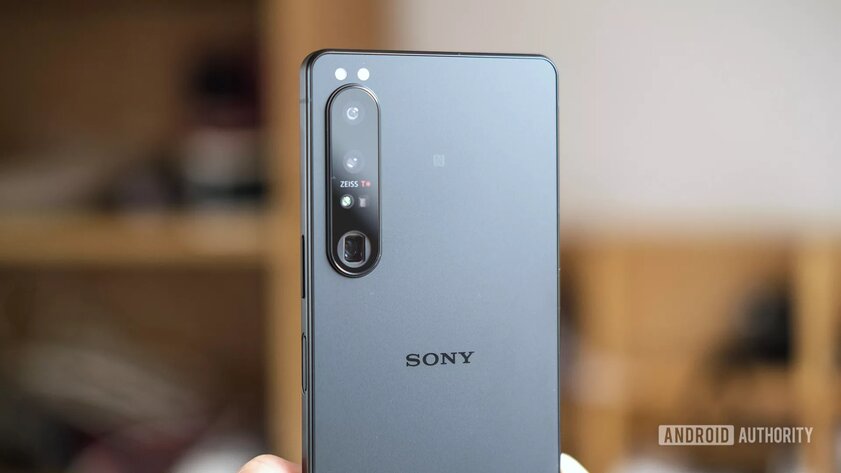Zoom in smartphones has made impressive strides since Apple introduced a 2x telephoto lens in the iPhone 7 in 2016. Of course, 2x telephoto zoom seems rather strange by modern standards, because now we have in our pocket 3x, 5x and even 10x zoom lenses. However, even now with the impressive development of technology on the market, there is still one serious problem with zoom on smartphones – we are talking about the lack of consistent quality when zooming in due to intermediate levels. How to solve this problem? You need two telephoto lenses.
Two is always better than one
The biggest argument in favor of two telephoto lenses is that the quality of the final content is greatly reduced if the image is not formed by the original optical zoom of this camera. For example, the user will see excellent quality photos when shooting with the main camera or a camera with a low zoom, plus the quality of the content will be quite high in the case of shooting from the telephoto lens itself (from a camera with a 3x or 5x zoom). But any zoom ratio between these two cameras or beyond their capabilities is highly dependent on digital or hybrid zoom technology.
And both of these options for approaching objects in the frame lead to a significant deterioration in the quality of the final image compared to special optical lenses if they had the same magnification factor. For example, I will give a detailed comparison between the 3x telephoto lens of the Galaxy S22 Plus and the 10x, 20x and 30x hybrid zoom. Naturally, a smartphone cannot perform all these tasks with just a lens, so various software technologies and zoom methods are involved.
And, as I said earlier, you can notice some degradation in zoom quality between 1× and the telephoto lens of a smartphone, for example, on the Google Pixel 7 Pro, which has a slight “gap” between the lenses. The smartphone is forced to use the hybrid Super Res Zoom to shoot from 2.5x to 4.9x magnification – this method uses image fusion technology. Google engineers decided to combine data from 1x and 5x cameras to get a hybrid result with intermediate zoom levels. As a result, you can see a great level of detail in the center of the image, but a significant loss of detail at the edges of the frame, where the 1× camera is used to fill in the gaps.
Take a look at this comparison shot from the Pixel 7 Pro at 3x hybrid zoom and a similar shot at native 3x zoom on the iPhone 14 Pro Max. Look at the left side of the pumpkin in the picture from the Apple flagship and compare with the frame from the Google gadget. However, on a Pixel smartphone, the right side of the pumpkin has excellent detail because it is the center of the frame in the original image.

Accordingly, dual telephoto lenses may well help narrow the image quality gap between smartphone zoom ratios, reducing the need for aggressive software zoom. In the case of Pixel smartphones, this should significantly improve image quality in areas with less detail due to the use of Super Res Zoom. Think of it as a lot of water breaks during a long run instead of just one or two stops.
This dual-telephoto approach will also allow smartphone makers to make an impressive breakthrough when it comes to zooming really far. For example, the Samsung Galaxy S21 Ultra and Galaxy S22 Ultra smartphones offer users dedicated cameras with 3x and 10x zoom instead of a single camera with 3x or 5x zoom. This provides a significant improvement in zoom over long distances compared to smartphones with a single telephoto lens in the near and medium range. What’s more, dual telephoto lenses will make portrait shots better, as a camera with a near-range zoom is considered ideal for portrait mode, compared to simply cropping at 1x or using a lens with a 5x or 10x zoom.
Finally, two dedicated telephoto lenses also provide access to a smoother and more flexible video recording system. For example, Samsung smartphones from the Ultra line provide better video quality at 10x zoom than smartphones without a native 10x telephoto lens. Accordingly, Samsung’s approach demonstrates that “on paper” there is still a big gap in quality between 3x and 10x, since the manufacturer does not have a special camera that can cover the range between these telephoto lenses (for example, 5x cameras). But theoretically, this option is still better for near and far zoom compared to a single camera with 4x and 5x zoom.
There is another solution
However, it is worth clarifying right away that a system with two telephoto lenses is not the only way to ensure consistent image quality at various zoom ratios. Variable telephoto lenses, which have appeared over the past couple of years, are another option to solve the problem. The Sony Xperia 1 IV was the first modern smartphone to feature a telephoto zoom lens with continuous zoom. This provides the user with a consistent level of image quality from 3.5x to 5.2x as the mechanism physically moves the optics to achieve true zoom.

But this solution, of course, is not without drawbacks. To start with, the Sony Xperia 1 IV’s telephoto zoom lags behind other periscope cameras when it comes to direct image quality. In addition, the native zoom range of this smartphone is quite small, since you don’t have to rely on a hybrid zoom – only a range from 3.5x to 5.2x remains. I would really like the manufacturer to offer a much wider zoom range.
It’s time for the best zoom
Huawei and Xiaomi were the first to offer two telephoto lenses on their smartphones, after which Samsung and Vivo picked up the baton. After that, there was a notable innovation from Sony with its telephoto zoom technology, so there is now quite a powerful and flexible zoom capability on the market. Unfortunately, however, other big players like Oppo, OnePlus and Apple are not as ambitious when it comes to zoom on flagship devices. This is especially upsetting for Oppo fans, who were one of the first to offer a periscope camera.
Accordingly, one can only hope that next year the major manufacturers will change their approach and use two telephoto lenses or zoom cameras. At the very least, I would really like to see the big players in the smartphone market create a really high-quality periscope zoom camera.
Source: Android Authority.
Source: Trash Box
Charles Grill is a tech-savvy writer with over 3 years of experience in the field. He writes on a variety of technology-related topics and has a strong focus on the latest advancements in the industry. He is connected with several online news websites and is currently contributing to a technology-focused platform.







